
Some people eat French fries with mayo. Some like the simplicity of salt.
Me? I need ketchup. Lots of ketchup.
I’ll never forget how excited I was as a newly-minted teenage driver to have the freedom to pull into the drive-thru at my favorite fast food restaurant, salivating as I inhaled the fragrance of those famous fries. I could barely wait to dip my hand into that steaming bag of tasty goodness. I pulled out my burger, my fries, and then… nothing. Not a single packet of ketchup.
Naturally, I drove back into the drive-thru to ask for my forgotten condiments, only to find out that they ran out of ketchup at my location. I was baffled; how could such an established global brand run out of such a crucial staple?
Over 20 years later, this seared memory resurfaced during a work meeting. Our team was discussing one of our many data analytics projects for a global restaurant chain. A solution we recently put into place for their insights team helped the QSR pinpoint one of their consumers’ top gripes – getting the wrong sauce with their drive-thru orders. The wrong dipping sauce is like having no ketchup; it taints the entire experience and can leave a lasting impression.
While providing a customer with the wrong condiment is a different problem than not having a condiment in stock at all, the result is the same – a poor experience. When I was 16, social media didn’t exist, so all I could do was call an 800 number to voice my frustrations. Today, customers vent through social channels, satisfaction surveys, online review sites, chatbots… and yes, even phone-based customer support centers.
This customer feedback data can spin gold for marketing and innovation insight, as well as for keeping simmering issues from becoming blazing fires (Wavicle’s ActiveInsights does just this). Other types of customer data, such as demographic, behavioral, and lifestyle, are equally valuable to restaurant brands that continuously test and run activation campaigns targeting finely-tuned consumer segments.
If quality customer data feeds the marketing machine, which then fuels demand, what happens when your customer-driven strategies don’t harmonize with other departments, functions, and external partners? How commonly does critical operational and third-party data remain fully or partially siloed, preventing full visibility across the enterprise and supply chain ecosystem?
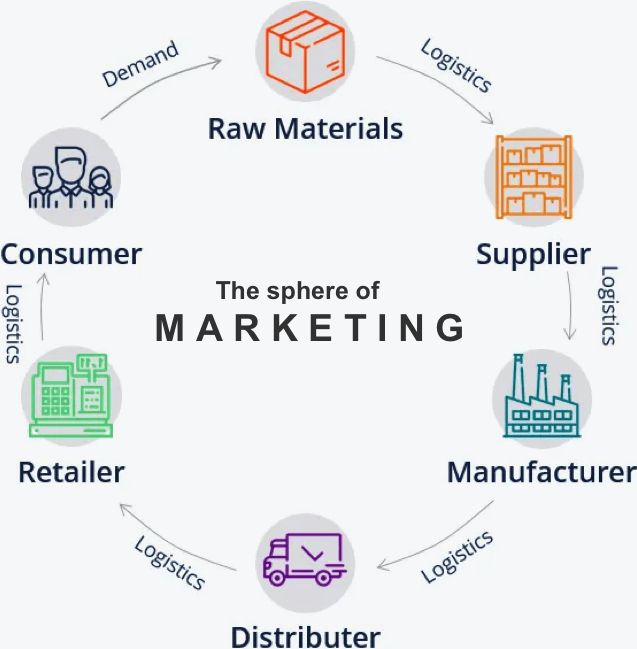
Once raw materials are sourced, they are shipped by a logistics provider to a supplier, which acts as a wholesaler. The materials are taken to a manufacturer to refine and process them into a finished product.
Afterward, a distributor wholesales the finished product, which is next delivered to a retailer. The retailer sells the product to consumers in a store. Once the consumer buys it, this completes the cycle, but it’s the demand that then goes back and drives the production of more raw materials, and the cycle continues.
It’s more common than you think. IDC, a technology analyst, and research firm released survey results on supply chain businesses in April 2020. According to their findings, 82% of supply chain executives view data and analytics as either critical or very important to their future success – but unfortunately, only 26% say that their analytics capabilities are comprehensive, with 31% saying their analytics are insufficient or poor.
But let’s be honest. These days, great marketing isn’t the primary cause of disrupted supply chains. Coronavirus is the new poster child of what a total end-to-end supply chain breakdown looks like. The lack of toilet paper, hand sanitizer, and bleach wipes will never be forgotten; neither will the shortage of non-essential goods like camping tents, bikes, and other outdoor equipment. And it doesn’t take a pandemic to wreak such havoc on the delivery of in-demand goods: highly volatile global economies and governments, layered with climate change, can easily trigger a similar impact.
If you’re a large restaurant, retailer, or another consumer brand, your supply chain must deliver consistently and fight disruption, whatever the cause, as a matter of course. Otherwise, even the best marketing won’t matter and your reputation will be at stake. To protect your brand’s integrity and performance in an era of constant change, consider three actions:
Assemble a strong team. A bench of internal and external data scientists, data engineers, and advanced analytics experts, among other technologists, can rally around your business priorities and the IT requirements to support them. Assuming some type of data quality and integration project is on the list, take heart that you’re not alone. Achieving a “single version of the truth” is still a top goal – and challenge – more than 20 years after the concept was first introduced in the preeminent industry manual on data warehousing, Corporate Information Factory (Inmon, Imhoff, and Sousa, 1998).
After all this time, why aren’t organizations further along with making their data repositories more connected, transparent, and actionable? The reasons abound: IT never ceases to change. Today’s data is neither neat, tidy nor structured. And balancing multiple tech stacks and legacy systems with contiguous modernization is complex and requires an intensive amount of planning, resources, and oversight. Advanced enterprises collaborate with deeply experienced consultants as part of their extended teams, tackling one priority area after another (often in multi-week sprints), leveraging technologies, accelerators and frameworks their partners apply to each project.
Make your data work for you, not against you. Data volumes continue to grow exponentially, but most of it isn’t useful. IDC found that 86% of new corporate data is born from replication and distribution, which creates data liabilities. Only a fraction of this data is tagged with attributes that define its integrity, such as origin. Moreover, IT organizations are being asked to integrate 26 new sources or targets every month.
When data overruns and overwhelms your infrastructure, operational processes get bogged down. This is typical for any enterprise, but especially for those collecting and storing vast amounts of customer data.
Let’s take our big restaurant client as an example. Last year, our data experts recognized that their CRM hub was saddled with inefficient flow and redundancy. This resulted in poor network performance and incomplete data. For marketers wanting to deploy personalized campaigns using real-time customer data and advanced targeting, a slow and cumbersome data environment is less than ideal.
Within weeks, Wavicle built a new CRM platform and integrated data from multiple siloed sources that provided immediate data availability to all downstream systems. Machine learning was then applied to create valuable customer microsegments for activation campaigns that directly supported our client’s business goals – increasing purchase frequency, check size and lifetime customer value.
Gartner Research’s 2019 Supply Chain Top 25 research plainly states what top performers do to stay ahead: they strategically align their supply chain digital capability roadmaps with their broader digital business transformation across all functions. Increasingly, these companies are investing in new technologies – AI, advanced analytics, and IoT – to streamline costs and meet customer expectations for visibility, speed of service, and personalization.
“Personalization at scale, leveraging ecosystems, and driving business-led digital strategies are this year’s most common trends among heads of supply chain,” says Mike Griswold, Gartner VP Analyst.
Invest in innovation. “It should come as no surprise that marketing – the de facto voice of the customer — is being tapped to generate new ideas and innovation. It’s also no surprise that improved customer experiences top the list of corporate goals for innovation efforts,” writes Julie Hopkins, Gartner Vice President, in Top Insights for the C-Suite 2019-2020: A Marketing Perspective.
Although customer experience initiatives top the marketing priority list, followed by driving revenue growth and developing new products and services, Gartner’s research also finds that CX refinements don’t return the expected value. Today’s hyper-competitive business climate is compounded by heightened consumer expectations, and conservative strategies to engage and build loyalty with customers aren’t enough to claim a leadership position. Harmonize efforts with other departments to ideate, test, and invest in bold initiatives and salient experiences that matter most to your customers. This requires research, technology, and a willingness among stakeholders to support the innovation process.
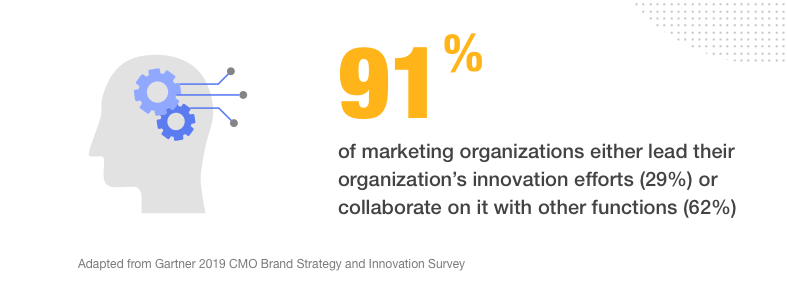
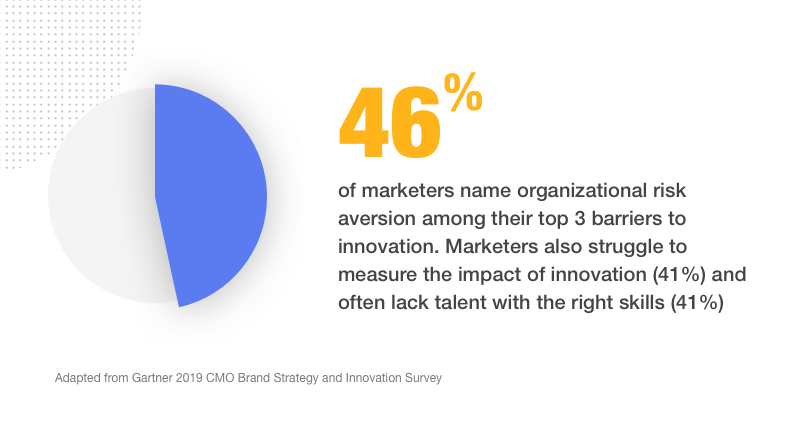
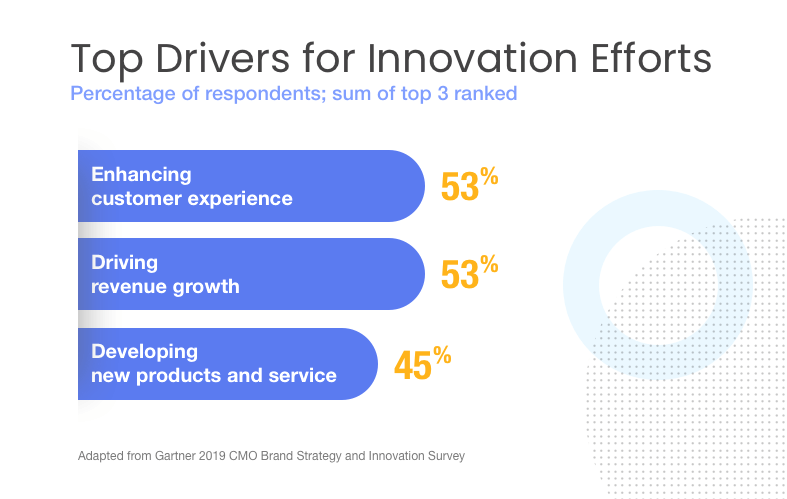
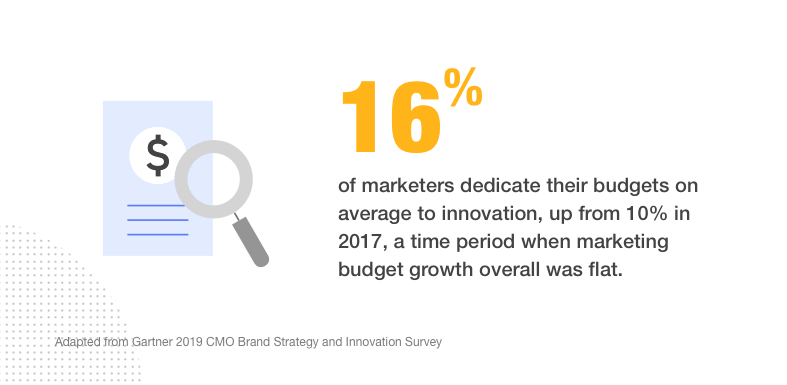
By improving your data and collaborating more closely with other departments, your demand forecasting will be primed to evolve to better meet your consumer’s needs. Traditional methods of predicting consumer demand are proving to be less accurate because historical data is less reliable during unstable times and fluctuating markets. It’s also widely accepted that AI and machine learning can process high volumes of big data with greater accuracy over time – McKinsey cites evidence that AI-enhanced supply chain management can reduce errors by up to 50%.
In an earlier blog on this topic, we made the case for using new data from real-time, third-party sources to pinpoint what consumers are doing now, at a local level, to better predict demand and your ability to satisfy it. I won’t rehash the same points, but you may find the case examples for how hotel, automotive, and food businesses are predicting their post-COVID recoveries to be insightful. (Read our companion blog here: Using Big Data to Better Predict Your Recovery: COVID-19’s Impact on Demand Forecasting).
Perhaps most importantly, if your supply chain operations aren’t agile enough to keep up with your improved forecasting, your predictions won’t be useful. Therefore, business process optimization also is a critical part of the effort.
As a career-long marketer for data-centric companies, I’ve observed that successful enterprises (either my own employer, or our clients) do these things: actively monitor and take action on relevant new trends, strive for transparency, and enable data ingestion and flow in all directions.
It makes sense that an integrated enterprise more readily serves up customer satisfaction and loyalty. As IDC puts it, “the ability to ingest broad and deep data sets to inform better decision making will be the single largest differentiator of supply chain performance in the future.”
Just imagine all the 16-year-old, ketchup-loving drivers who will be returning again and again, without cloudy memories overshadowing their joy.
Sources: